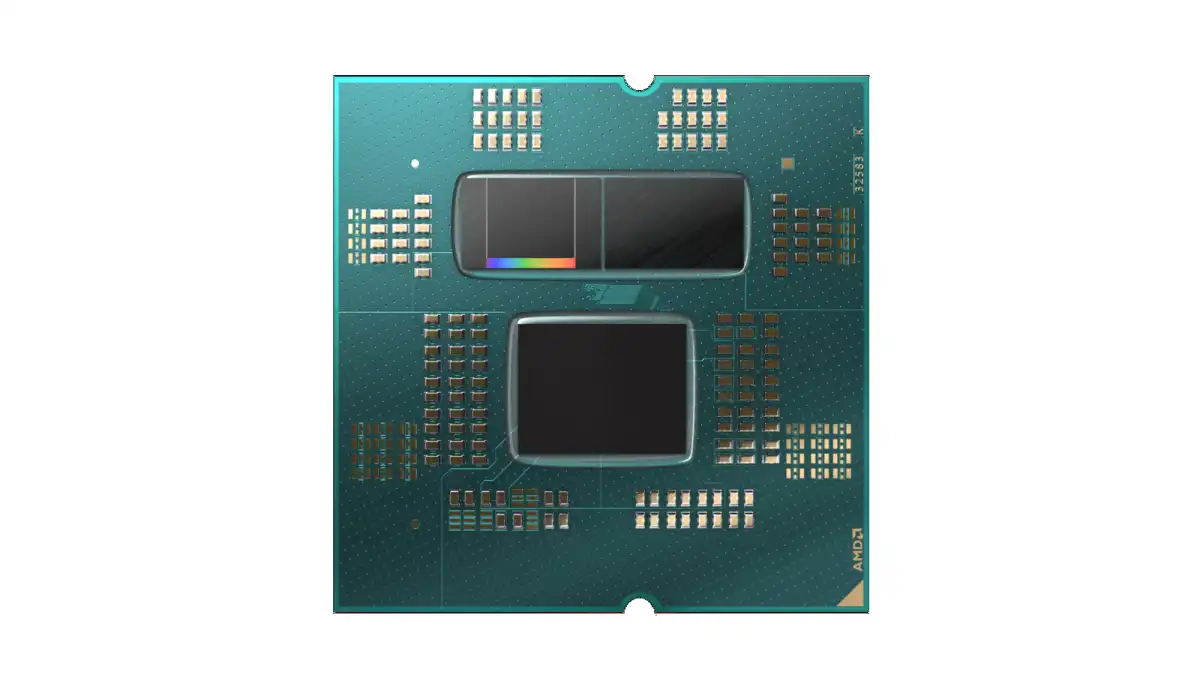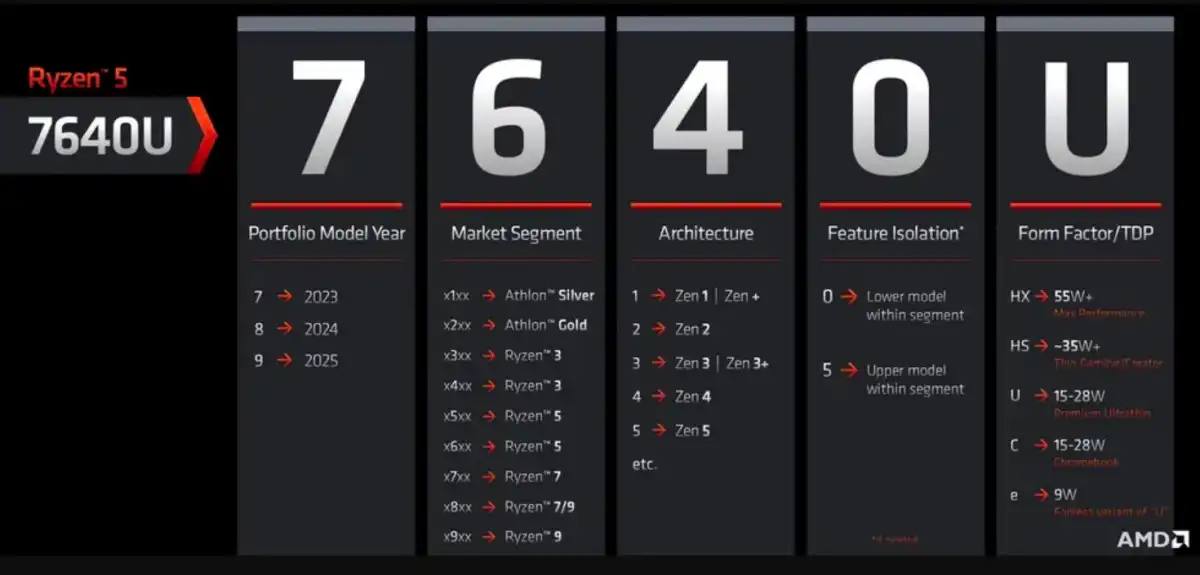AMD’s meteoric ascent in recent years has elevated it to the ranks of the world’s top component manufacturers. Much of the development has been driven by its Ryzen CPUs, which have demonstrated to be more than capable of competing with Intel. The new Ryzen 7000 Series, which AMD announced in August 2022, has generated a lot of buzzes. The majority of its Processors were then revealed at CES, but more may be on the way in 2023. Everything you need to know is right here.
AMD Ryzen 7000 Series release date
On August 29, 2022, AMD announced the first Ryzen 7000 Series CPUs. That’s sooner than we’d normally anticipate, but it makes sense given that the Ryzen 6000 Series didn’t include any desktop Processors.
The first four PC processors went on sale on September 27, 2022, but that was just the start.
AMD unveiled the majority of its Ryzen 7000 Series range during its CES keynote on January 4, 2023. This included several additional desktop Processors, and variants lacking the new 3D V-Cache were published on January 10th.
However, the Ryzen 9 7950X3D and Ryzen 9 7900X3D were not available until February 28th. The Ryzen 7 7800X3D, which is marginally less powerful, will not be accessible until April 6th.
Laptops driven by the Ryzen 7000 Series are starting to appear, with many more anticipated throughout 2023. The first Ryzen 7045 Series (dubbed ‘Dragon Range’) products are also expected in March 2023.
AMD Ryzen 7000 Series pricing
AMD disclosed recommended pricing alongside the announcement of the first four Ryzen 7000 Series desktop CPUs:
- Ryzen 9 7950X – $699
- Ryzen 9 7900X – $549
- Ryzen 7 7700X – $399
- Ryzen 5 7600X – $299
At CES 2023, AMD unveiled the following desktop Processors. We only had proposed US pricing for the ones without the 3D cache at first, but the others were disclosed in a February 2022 tweet:
- Ryzen 9 7950X3D – $699
- Ryzen 9 7900X3D – $599
- Ryzen 9 7900 – $429
- Ryzen 7 7800X3D – $449
- Ryzen 7 7700 – $329
- Ryzen 5 7600 – $229
Remember, that is most likely not what you will finish up spending. Individual stores can set their prices for the processors, so there will almost certainly be some variance.
Laptop Processors are not accessible as separate components because they are intended to be incorporated into devices. The price you pay will thus be determined by a variety of other variables, including the other important specifications and the company in the issue.
AMD Ryzen 7000 Series specs and features
Desktop CPUs
Many of the Ryzen 7000 Series’ main characteristics were unveiled alongside the first desktop processors in August 2022. The new Processors move to a 5nm process and implement the Zen 4 design that debuted alongside them, which AMD claims brings “gaming and content production performance supremacy to new heights”.
Here’s a rundown of the ten desktop CPUs revealed thus far, both at the original event and at CES 2023:
- Ryzen 9 7950X – 16 cores, 32 threads, 5.7GHz max clock speed, 80Mb cache, 170W TDP
- Ryzen 9 7950X3D – 16 cores, 32 threads, 5.7GHz max clock speed, 128Mb cache, 120W TDP
- Ryzen 9 7900X – 12 cores, 24 threads, 5.6GHz max clock speed, 76Mb cache, 170W TDP
- Ryzen 9 7900X3D – 12 cores, 24 threads, 5.6GHz max clock speed, 128Mb cache, 120W TDP
- Ryzen 9 7900 – 12 cores, 24 threads, 5.4GHz max clock speed, 65W TDP
- Ryzen 7 7800X3D – 8 cores, 16 threads, 5.0GHz max clock speed, 96Mb cache, 120W TDP
- Ryzen 7 7700X – 8 cores, 16 threads, 5.4GHz max clock speed, 40Mb cache, 105W TDP
- Ryzen 7 7700 – 8 cores, 16 threads, 5.3GHz max clock speed, 65W TDP
- Ryzen 7 5800X3D – 8 cores, 16 threads, 4.5GHz max clock speed, 96Mb cache, 105W TDP
- Ryzen 5 7600X – 6 cores, 12 threads, 5.3GHz max clock speed, 38Mb cache, 105W TDP
You may notice four new CPUs with the suffix ‘3D,’ which have more L2 and L3 cache than the regular versions. This aims to improve responsiveness and framerates without affecting clock speeds or overclocking capabilities significantly.
All of the new desktop Processors are built on AMD’s newest Zen 4 design and are backward compatible with current AM5 motherboards if a BIOS upgrade is performed. Other important characteristics shared by all of the new CPUs are PCIe Gen 5 support and DDR5 memory (DDR4 has been dropped).

Each Ryzen 7000 desktop Processor contains 3 chipsets: two 5nm Zen 4 CPU units and a new 6nm I/O die with incorporated RDNA 2 graphics, DDR5 and PCIe 5.0 controllers, and integrated power management. This means that every processor has some graphical capability, with a dedicated graphics device required only for gaming or other extremely demanding tasks.
According to AMD, the Zen 4 design on which the chips are built will provide a “greater than 15%” increase in single-threaded performance over Zen 3, though the new processors may require more electricity to achieve that level of performance.
Laptop CPUs
In September 2022, AMD announced the first Ryzen 7000 Series notebook Processors. The Ryzen 7020 Series, codenamed ‘Mendocino,’ is specially intended for daily laptops, with choices for both basic Athlon chips and standard Ryzen 3 & 5 processors:
- Ryzen 5 7520U – 4 cores, 8 threads, 4.3GHz max clock speed, 6Mb cache, 8-15W TDP
- Ryzen 3 7320U – 4 cores, 8 threads, 4.1GHz max clock speed, 6Mp cache, 8-15W TDP
- Athlon Gold 7220U – 2 cores, 4 threads, 3.7GHz max clock speed, 5Mp cache, 8-15W TDP
All three are built on improved variants of the Zen 2 architecture and employ the 6nm technology rather than the 5nm process. AMD emphasizes their advantages for battery life, with up to 12 hours feasible on some devices. However, this will be determined by a number of variables, including battery capability, screen size, and luminance.
It pairs with AMD’s latest Radeon 610M integrated graphics, which AMD claims can offer 720p gameplay at more than 60 frames per second. There is also support for up to four screens and DDR5 Memory.
When compared to Intel’s 11th-generation core i3-1115G4, AMD claims the new Ryzen 3 7320U is up to 80% quicker at file compression, 57% faster at multitasking, and 31% faster in “office efficiency” – scenarios that many people care about. You can also anticipate program launches to be up to 31% quicker. However, there are no clear comparisons to the more recent 12th and 13th generations, which both provided substantial improvements.
However, the majority of the new Processors were unveiled at CES 2023. These are divided into four series: Ryzen 7030 (thin and light laptops), Ryzen 7035 (luxury thin and light laptops), Ryzen 7040 (elite ultrathin laptops), and Ryzen 7045 (intense gaming/creator laptops). Here’s a rundown of what each has to offer:
- Ryzen 7045 Series – Zen 4 architecture, up to 16 cores/32 threads, 5nm node, up to 80Mb cache, DDR5 memory
- Ryzen 7040 Series – Zen 4 architecture, up to 8 cores/16 threads, 4nm node, up to 20Mb cache – DDR5/LPDDR5 memory
- Ryzen 7035 Series – Zen 3+ architecture, up to 8 cores/16 threads, 6nm node, up to 20Mb cache, DDR5/LPDDR5 memory
- Ryzen 7030 Series – Zen 3 architecture, up to 8 cores/16 threads, 7nm node, up to 20Mb cache, DDR4/LPDDR4 memory
- Ryzen 7020 Series – Zen 2 architecture, up to 4 cores/8 threads, 6nm node, up to 6Mb cache, LPDDR5 memory.
AMD understandably wants to highlight the high-end Ryzen 7045 Series, a new inclusion for this year. It is known as the ‘Dragon Range,’ and it is intended to be incorporated into the most potent notebooks available, capable of AAA gaming or almost any other taxing task.

It’s led by the top-tier Ryzen 9-7945X, which has a massive 16 performance cores and 32 threads. The Core i9-13980HX has 24 processors in total, but 16 of them are for economy. With that in mind, AMD claims a 78% boost in Cinebench performance, a famous measure of Processor rendering speed.
The 7040 and 7035 Series are less exciting in contrast, with only 8 cores and 16 threads, but they will almost certainly find their way into premium computers that buyers will contemplate. However, it is worth noting that the latter employs the Zen 3+ design rather than the most recent Zen 4.
Many of the latest high-end laptop Processors are intended to be used in conjunction with discrete Graphics. AMD released four RX 7000 Series graphics cards. However, there are no replacements for the entire RX 6000 Series, which continues to perform admirably.
New naming system
AMD is launching a new naming scheme for its processors, beginning with the Ryzen 7000 Series. In a blog entry, the firm claims this is partially due to “the influx of new SOCs in new categories we’re developing”. Each number and letter represents a distinct value, enabling users to rapidly recognize critical information about a particular CPU.

According to the specifications and AMD’s claims, the Ryzen 7000 Series will be a power to be reckoned with in both desktop Computers and laptops. They appear to be going head-to-head with Intel, who also revealed the majority of its 13th-generation Raptor Lake Processors at CES 2023.


